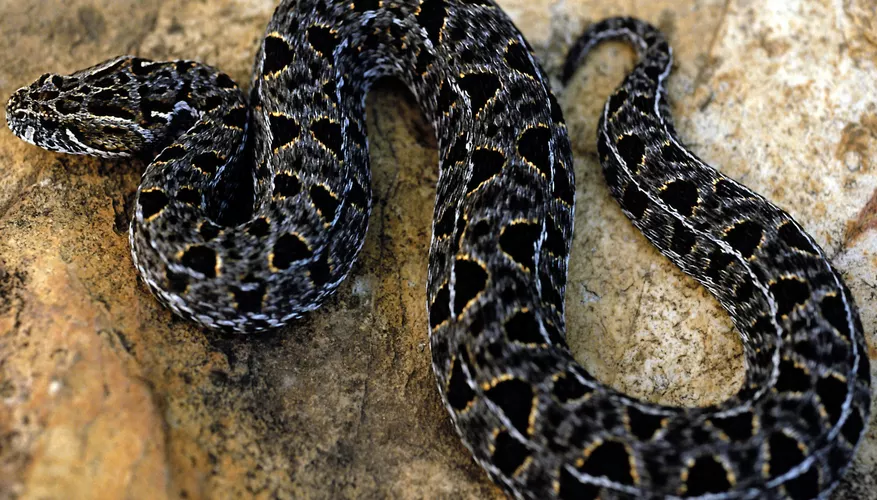Despite their flexibility and fluid movements, snakes do have bones—and lots of them! While an adult human has 206 bones, a snake can have 300 or more, depending on its species and size. Unlike mammals, which have diverse bone structures, snakes primarily have three types of bones: skull, jawbone, and backbone.

The snake’s skeleton is uniquely adapted to provide both rigidity and flexibility, allowing it to slither, climb, and constrict prey.
| Bone Type | Function |
|---|---|
| Skull | Protects the brain and supports jaw movement |
| Jawbone | Enables extreme jaw flexibility for swallowing large prey |
| Backbone (Vertebral Column) | Provides support, flexibility, and mobility |
| Ribs | Aid in movement, respiration, and expanding for large meals |
| Pelvic Spurs (in some species) | Vestigial hind limb remnants, used in mating |
Each vertebra (except in the tail) is attached to two ribs, contributing to the snake’s elongated and flexible body structure.
Snakes rely on their backbone and ribs for movement rather than limbs.
The vertebrae are connected by interlocking bony projections, which prevent dislocation while still allowing great flexibility.
Snakes lack a breastbone (sternum), making it possible for them to expand their ribcage when swallowing large prey.
| Snake Species | Rib Function |
|---|---|
| Cobras | Expand upper ribs to form their iconic hood |
| Hognose Snakes | Pull in ribs to flatten their body as a defensive display |
| Constrictors (Boas, Pythons) | Use ribs and muscles to squeeze prey |
The free-floating rib structure allows snakes to compress, expand, and maneuver efficiently, adapting to various environments.
A snake’s skull and jaw are designed for maximum flexibility, allowing it to consume prey larger than its head.
| Jaw Adaptation | Function |
|---|---|
| Stretchy Ligaments | Connect the jaw to the skull, allowing extreme expansion |
| Four Separate Jaw Elements | Move independently, enabling sideways and vertical stretching |
| Unfused Front Jaw Bones | "Walk" prey into the mouth by alternating jaw movements |
| Detachable Lower Jaw | Separates from the skull, making room for large meals |
Unlike mammals, whose jaws are rigid, a snake can open its mouth sideways and vertically, stretching rather than chewing its food.
While modern snakes are limbless, some species, like boas and pythons, still retain vestigial hind limbs, known as pelvic spurs.
| Snake Species | Vestigial Limbs | Function |
|---|---|---|
| Boas & Pythons | Small, claw-like pelvic spurs | Used by males in mating to grip females |
| Other Snakes | No visible limb remnants | Fully evolved for limbless locomotion |
These tiny leg remnants are evidence of snakes' evolutionary past when their ancestors likely had functional legs.
Snakes may appear boneless, but their skeletal system is remarkably complex and efficient.
Their flexible backbone and ribcage enable fluid movement.
Adaptable jawbones and skulls allow them to consume large prey.
Some species still possess vestigial limbs, hinting at their evolutionary history.
Understanding the snake’s bone structure highlights the fascinating adaptations that make these reptiles such efficient hunters and survivors.
animal tags: Snakes
We created this article in conjunction with AI technology, then made sure it was fact-checked and edited by a Animals Top editor.